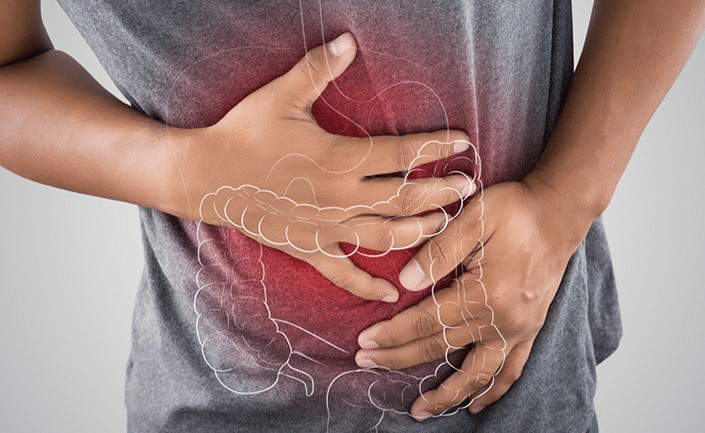4 Signs You are Lactose Intolerant
Millions of individuals in this world cannot digest certain types of natural sugar known as lactose present in their milk or different dairy products. If you are among them, you are intolerant to lactose. Some people cannot identify this condition in them, but below mentioned symptoms or signs can help you find out if you are lactose intolerant.
1. Diarrhea

The main symptom that shows you may have lactose intolerance is diarrhea, in which the water content gets increased in your stool. This happens most commonly among children or kids rather than adults.
However, you don’t have to worry much because diarrhea can cause various other problems as well, such as medications, malabsorption, infections, etc. Therefore, according to IntoleranceLab, you should always get your food intolerance test done to confirm the health issue you are experiencing.
2. Gas

The development of gas is the consequence of the action of microbes in the internal organ called the large intestine (colon). As the huge lactose particle goes unaltered through the small digestive tracts, it is utilized by the microbes that are typically present in the colon. Therefore, gases like hydrogen are delivered and are set free from the rectum. If you find that there is increased gas production in your system, then it might indicate that you are lactose intolerant.
3. Stomach pain

This is the most common sign found in both adults and children. The pain is caused because of the fermentation action in the colon when the bacteria ferment the unabsorbed lactose. This again results in the production of excessive water and gas. People mostly experience such kinds of pain around their lower tummy and navel.
4. Constipation

Constipation is another sign of lactose intolerance, but it is very rare. Studies have shown that constipation occurs mainly because of the excessive methane production in the colon. However, this does not mean that constipation occurs only because of lactose intolerance.
It may also happen due to dehydration in the body, diabetes, certain medications, diseases, etc. But we advise you to consult a doctor if you have had this issue for quite a while now.
Causes of Lactose Intolerance

The body digests lactose utilizing a substance called lactase. This separates lactose into two sugars called galactose and glucose, effectively assimilated into the circulatory system. Individuals with such a condition don’t deliver sufficient lactase, so lactose stays in your digestive system where microorganisms mature it. This prompts the creation of different gases, which cause the side effects related to lactose intolerance.
This condition might be permanent or temporary and contingent upon the fundamental justification for why the body isn’t delivering sufficient lactase. It is mostly developed in grown-ups and stays in them for their whole life; however, cases in little youngsters are frequently brought about by contamination in the stomach and may keep going for half a month.
Diagnosis of Lactose Intolerance

Hydrogen breath test
The hydrogen breath test is the most well-known test to find out if you are lactose intolerant. This test is done at a specialist’s office. Practically speaking, many specialists will ask patients who speculate they have lactose intolerance to stay away from milk and dairy items for one or fourteen days to check whether their indications die down, and will then, at that point, affirm the conclusion with the hydrogen breath test.
The hydrogen breath test estimates the quantity of hydrogen present in the breath after drinking a lactose-stacked refreshment.
Lactose tolerance test
In this test, a person is made to drink a solution containing lactose, and after that, a specialist takes a blood sample. The blood sample is taken to identify how much glucose is present in the blood. If a person is lactose intolerant, the test will either show a slow rise in sugar level or no rise. This happens when the body cannot break down lactose into its simpler form of glucose.
Milk tolerance test
In this test, you will be provided with a glass of milk of approximately 500 ml, and you will have to drink it to get your blood sugar level tested. At this point, when there is no change in the blood sugar level even after drinking the glass of milk, then this might be the sign that you are lactose intolerant.
It is advised to frequently see a doctor if you experience any of the symptoms mentioned earlier in this article.
Treating Lactose Intolerance

Generally speaking, you can deal with the manifestations of lactose intolerance by changing your eating routine to restrict or keep away from food sources and beverages that contain lactose, like milk and other dairy products.
Certain individuals may have to restrict how much lactose they eat or drink, while others might have to stay away from it completely. Utilizing lactase items can assist certain individuals in dealing with these signs.
Factors Responsible for Lactose Intolerance

Various factors are responsible for this condition, including the following:
- Age: Children and babies are not very prone to this issue. It is most commonly found in adults.
- Premature birth: A baby’s body starts developing lactase-producing cells in the third trimester only, which means that premature birth can also lead to lactose intolerance.
- Ethnicity: It is mostly found in people from Asia, America, and Africa.
- Cancer treatments: If a person has cancer, he has to go through different treatments that contain radiation. These radiations can be harmful to your stomach and create complications in your small intestine. This increases the chances of lactose intolerance in a person getting cancer-related therapies.
To Sum Up
Lactose intolerance is when the body becomes incapable of breaking down lactose into simple sugar forms such as glucose. Various signs may help you understand if you are experiencing this condition. These symptoms include stomach pain, diarrhea, more production of gas, and constipation.
You should also know how you can control and treat this condition. A person experiencing this issue must change his eating routine. He should reduce the amount of dairy products in his diet. However, we recommend you consult your doctor if the condition worsens with time.




